Writing good survey questions is key to collecting quantitative data that’s both valid and reliable. Whether you’re a researcher, marketer, student, or looking for insights through market research, understanding the type of survey you need is vital. Help with dissertation work, clear, unbiased questions help uncover true insights—not guesses. This guide breaks down how to write good survey questions that get real answers you can trust and actually use.
What Makes a Good Survey Question?
What makes a good survey question? It’s more than just asking something and hoping for an answer—it’s about asking the right thing in the right way for conducting a survey. A good survey question is clear, unbiased, and actionable. Clarity means there’s no room for confusion; the survey respondent knows exactly what’s being asked. Survey questions should use simple, direct language—no jargon, no ambiguity, especially in choice questions to ensure clarity in survey research design. Unbiased questions avoid leading language that nudges someone toward a particular answer. They present all options fairly, giving the respondent space to think and respond honestly to multiple choice questions. And perhaps most importantly, a good survey question type is actionable. That means the answers you collect can actually inform a decision, improve a product, or support a theory in research has shown to be effective for survey designers. If your question doesn’t lead to insight or change, it’s just noise. Understanding what makes a good survey question is the foundation of gathering meaningful data, much like having solid dissertation guidance is key to successful academic research. Whether you’re trying to shape a marketing strategy, write a thesis, conduct survey research, or test a new idea, well-constructed questions are where it all begins, especially when using multiple choice questions.
Open vs. Closed-Ended Questions
When writing survey questions, knowing when to use open- and closed-ended questions is crucial for collecting qualitative data. Open-ended questions invite detailed, personal responses—great for exploring opinions or uncovering insights. But they’re harder to analyze without the right survey design. Closed-ended questions, like multiple choice or yes/no, are quick to answer and easy to quantify, but may limit depth in different survey formats. Use open-ended when you want stories; closed-ended when you need stats—each type of question serves a specific purpose in gathering insights.
Examples:
Open: “What do you like about our service in relation to our research questions?”
Closed: “How satisfied are you? (Very, Somewhat, Not at all) are important scales in questions in your survey.
Leading vs. Neutral Questions
Survey wording matters—a lot. Effective survey questions must be neutral to avoid skewing responses in good survey design. Leading questions subtly push people toward a certain answer, often without them realizing it. Neutral questions, on the other hand, invite honest, unbiased feedback. Clarity and fairness are key when learning how to ask survey questions that truly reflect your audience’s thoughts.
Leading: “How much do you love our amazing new product?”
Neutral: “How would you rate your experience with our new product?”
Survey Structure and Question Order
Survey structure and question order play a powerful role in shaping the quality of your data. A well-designed questionnaire guides respondents smoothly, reducing confusion and bias—especially important when conducting an online survey where clarity is everything and avoiding double-barreled questions is essential. Start with general questions and gradually move to specifics—this is the funnel technique. It eases people in and helps build context. To avoid order bias, especially in multiple choice, use randomization when possible. Thoughtful survey structure isn’t just good design—it ensures your questions don’t accidentally influence the survey response quality. Every detail matters when aiming for honest, reliable responses in the research has shown to improve survey outcomes.
Start Broad, Then Narrow
When learning how to write a questionnaire, the funnel approach is key to effective survey research design to keep your survey focused. Start with broad, general questions to ease respondents in, then move to more specific ones. This method helps build a natural, intuitive flow and avoids overwhelming people early on. If you’re wondering how to design a survey questionnaire that feels smooth and logical, think of it like a conversation—or start with a clear survey template to guide the flow—general first, then detailed.
Include Demographics Last
One of the survey best practices is placing demographic questions at the end. Asking about age, income, or background too early can create discomfort or bias how respondents may answer later questions in an effective survey design. In research survey questions, keeping personal items last helps maintain focus, builds trust, and improves overall response quality.
We will contact you soon.

10 Best Practices for Writing Survey Questions
Mastering the best practices for survey design—and following proven survey tips—is essential if you want accurate, actionable data to test your survey. Whether you’re a student, marketer, or researcher, knowing how to create good survey questions can be the difference between insights and guesswork in your survey study. Here are ten practical tips you can apply right away.
Ask One Thing at a Time
A key rule in how to write a good survey question is to ask only one thing at a time. Double-barreled questions confuse people and skew results.
Bad: “How satisfied are you with our pricing and support?”
Better: “How satisfied are you with our customer support?”
Use Clear and Familiar Language
In survey writing, clarity is everything. Use simple, familiar language your audience understands. Avoid jargon or overly technical terms that can confuse or mislead.
Watch out for vague words like choice questions.
• Frequently asked questions can help reduce survey fatigue.
• Regularly
• Affordable
• User-friendly
• Effective questionnaire design can significantly improve your survey experience.
Make Answers Mutually Exclusive
A good survey avoids overlapping answer choices. When writing survey questions for research, make sure each of your response options is clear and distinct to prevent confusion.
Bad:
What’s your age in the context of conducting a survey?
• 18–25
• 25–35 is a common age range that might be included in different survey demographics.
Good survey design helps to minimize survey fatigue.
• 18–24
• 25–34: A common demographic in market research.
Cover All Possible Answers
When thinking about how to design a survey, always give respondents room to answer truthfully. A good survey includes options like “Other” or “Prefer not to answer” to keep your survey inclusive so no one feels boxed in. These small touches show respect and build trust.
Use Balanced Scales
Balanced scales are essential in survey design best practices. They prevent bias and give respondents equal room to agree or disagree.
Example (5-point Likert scale):
How satisfied are you?
• Very dissatisfied
• Dissatisfied survey participants often provide valuable feedback.
• Neutral
• Satisfied
• Very satisfied with the quantitative data collected.
Avoid Absolutes (Always, Never)
In learning how to write effective survey questions, avoid absolutes like “always” or “never.” They box people in and often don’t reflect real behavior. Most actions fall somewhere in between, and forcing extremes can distort results. Let nuance live.
Test Before Launch
Before building a survey at scale, test it. Whether through A/B testing or a small internal run, Pre-testing helps catch confusing wording, logic issues, or flawed flow—an approach often recommended by dissertation supervisors to ensure clarity and effectiveness in your quantitative survey. It’s a key step in how to make survey questions that actually work in the real world.
Keep Questions Optional When Appropriate
Knowing how to ask survey questions means respecting boundaries. For sensitive topics—like income, identity, or health—make questions optional at the end of your survey. It’s one of the top survey best practices, especially in academic or HR settings where privacy builds trust.
Use Inclusive Language
A good survey may speak to everyone, whether it’s created by an individual researcher or an academic support center. StudieCentrum Assen. Use inclusive, culturally neutral language that respects all identities and backgrounds—something professional ghostwriters can help in crafting questions in your survey for better engagement. are also trained to do when crafting high-quality content for survey participants. Writing good survey questions means avoiding assumptions and choosing words that reflect diversity with care and awareness in qualitative data.
Be Consistent with Formatting
Consistency in survey formatting boosts both usability and credibility in your questionnaire design. Use the same fonts, scale labels, and layout throughout. When learning how to design your survey, remember—clean, uniform design keeps users focused on answers, not deciphering your form—so take time to make your survey clear and easy to follow.
Examples of Bad Survey Questions (and Fixes)
Even with the best intentions, poorly written survey questions can lead to misleading survey results. To help you understand how to write a survey question that’s effective and insightful, here are some real survey question examples—side by side with improved versions. Use these as a quick-reference guide for what to avoid and how to fix it.
|
Bad Survey Question |
Why It’s a Problem |
Better Version: A good survey design can significantly improve the quality of responses. |
|
How great is our customer support? |
Leading question assumes a positive experience. |
How would you rate your experience with our customer support? |
|
Do you always use our app when shopping online to enhance your survey experience? |
Uses an absolute (“always”) that limits honest responses in the survey length. |
How often do you use our app when shopping online? |
|
What do you think about our product and website? |
Double-barreled—asks two things in one. |
What do you think about our product when asking respondents for feedback in your employee survey? (Then separately ask about the website.) |
|
How often do you buy luxury items like watches and jewelry in a quantitative survey study? |
“Luxury” is vague and may mean different things to different people. |
How often do you purchase items such as watches or fine jewelry? |
|
Rate the affordability of our pricing in this satisfaction survey. |
“Affordability” is subjective and unclear. |
How would you rate the value of our pricing for what you receive? |
|
What is your income? |
Too direct and potentially invasive if not optional. |
What is your income range? (Optional) |
|
Which of our new features do you like most? |
Assumes the respondent likes at least one feature of the multiple choice questions in the design process. |
Which, if any, of our new features do you find useful in completing the survey? |
Special Use Cases (Zoom, Research, UX)
Different goals call for different approaches to survey design. Whether you’re gathering quick feedback in a meeting or conducting in-depth research, tailoring your questions to the context is key. Here’s how to create a survey for research, UX, or even live virtual settings:
Zoom Polls (Remote Feedback)
Keep it short and engaging. Use closed-ended questions for quick analysis and limit choices to avoid delays. Make sure questions are relevant to the moment and easy to understand on the spot.
Academic Research: A critical component of survey research design.
Focus on precision. Research survey questions should be neutral, clear, and backed by theory or prior studies. Use validated scales when possible, and always pre-test for clarity and consistency.
UX Testing is essential for ensuring the right survey is conducted.
Ask task-based, behavior-driven questions. Pair surveys with usability sessions and focus on user emotions, friction points, and clarity to enhance the overall experience for survey creators. Open-ended questions work well here for rich, qualitative feedback.
We will contact you soon.

Final Checklist Before You Launch Your Survey
Before hitting “send,” run through this quick checklist to make sure your survey is clear, effective, and ready to deliver meaningful results—just like you would before submitting work to survey creators. dissertation proofreading services. It’s the last step in writing survey questions and designing surveys that truly work—ensuring the survey data you collect is reliable and useful.
✅ Final Survey Checklist:
❒ Are all questions clear and jargon-free?
❒ Did you avoid leading or biased language?
❒ Are answer options mutually exclusive and exhaustive?
❒ Is your question order logical (broad to specific) to enhance the flow of asking questions?
❒ Are demographic questions placed last?
❒ Did you test the survey on a small group to refine your research method?
❒ Are sensitive questions optional?
❒ Is formatting consistent and user-friendly?
❒ Did you include “Other” where needed?
❒ Is your survey short, focused, and purposeful?
FAQ
What is the most important factor to consider when writing a survey question?
Clarity is the most important factor in good survey design to take your survey results seriously. A question should be easy to understand, free of bias, and specific enough to produce meaningful, honest responses from a diverse audience.
How many questions should a good survey have?
A good survey is concise—ideally 5–15 questions. Keep only what’s essential. Too many questions can lead to drop-offs or rushed answers, reducing the quality of your data.
What makes a survey question biased?
Biased survey questions use leading language, emotional triggers, or assumptions that push respondents toward a particular answer, distorting results and harming data reliability.
How do I write survey questions for research purposes?
Use clear, neutral language, avoid assumptions, and align each question with your research objective. Pre-test your questions and consider using validated scales when applicable.

Popular articles
Study help in the Netherlands
Professional help with your studies and thesis
An intake interview is always completely non-committal, we are happy to give you more personal information and tailored advice, so that you have a good idea in advance of what we can do for you.











